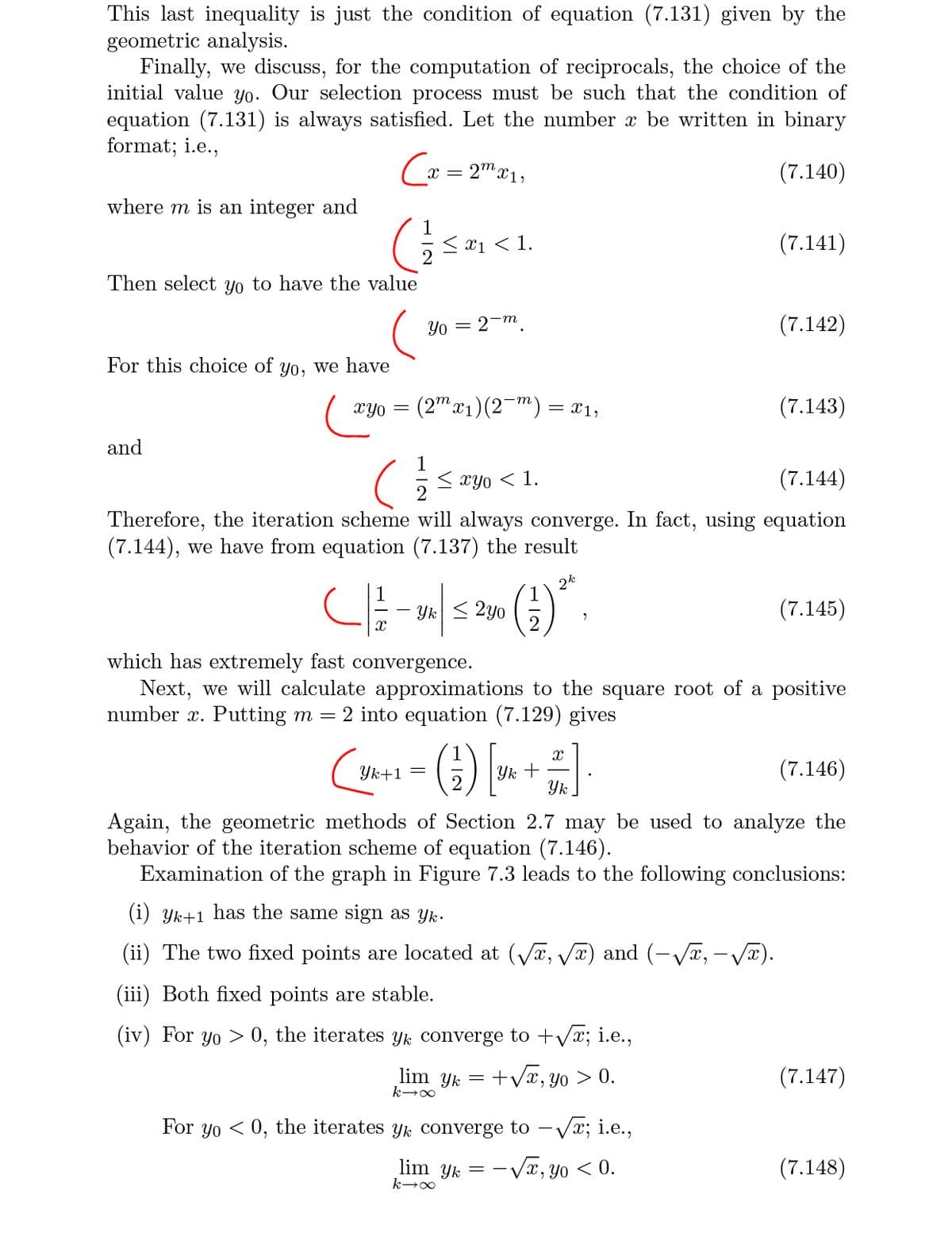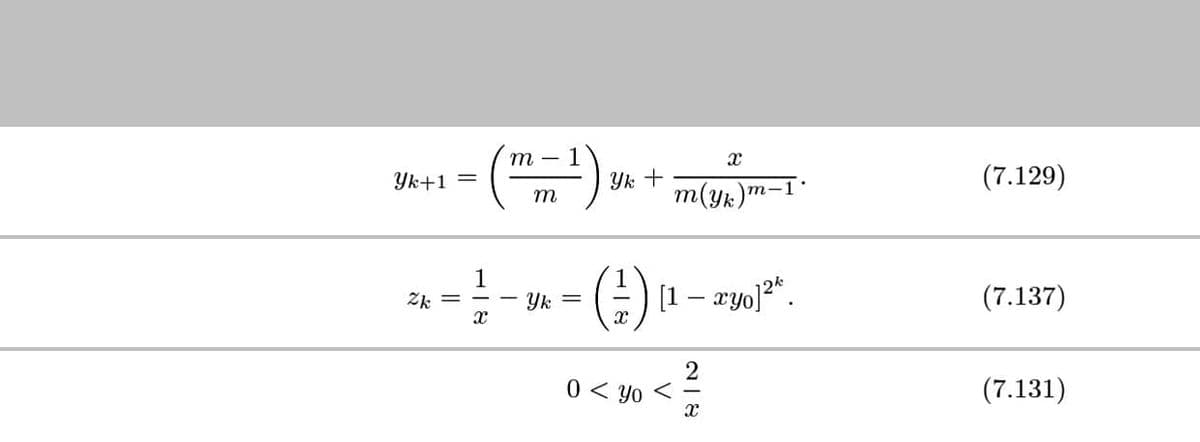This last inequality is just the condition of equation (7.131) given by the geometric analysis. Finally, we discuss, for the computation of reciprocals, the choice of the initial value yo. Our selection process must be such that the condition of equation (7.131) is always satisfied. Let the number x be written in binary format; i.e., Cx = 2"r1, (7.140) where m is an integer and < x1 < 1. (7.141) Then select yo to have the value Yo = 2-m (7.142) For this choice of yo, we have = 0hx (2"x1)(2¬m) = = x1, (7.143) and < xyo < 1. (7.144) Therefore, the iteration scheme will always converge. In fact, using equation (7.144), we have from equation (7.137) the result Yk < 2yo 2 (7.145) which has extremely fast convergence. Next, we will calculate approximations to the square root of a positive number x. Putting m = 2 into equation (7.129) gives () Yk + Yk (7.146) Yk+1 = Again, the geometric methods of Section 2.7 may be used to analyze the behavior of the iteration scheme of equation (7.146). Examination of the graph in Figure 7.3 leads to the following conclusions: (i) Yk+1 has the same sign as yk-
Addition Rule of Probability
It simply refers to the likelihood of an event taking place whenever the occurrence of an event is uncertain. The probability of a single event can be calculated by dividing the number of successful trials of that event by the total number of trials.
Expected Value
When a large number of trials are performed for any random variable ‘X’, the predicted result is most likely the mean of all the outcomes for the random variable and it is known as expected value also known as expectation. The expected value, also known as the expectation, is denoted by: E(X).
Probability Distributions
Understanding probability is necessary to know the probability distributions. In statistics, probability is how the uncertainty of an event is measured. This event can be anything. The most common examples include tossing a coin, rolling a die, or choosing a card. Each of these events has multiple possibilities. Every such possibility is measured with the help of probability. To be more precise, the probability is used for calculating the occurrence of events that may or may not happen. Probability does not give sure results. Unless the probability of any event is 1, the different outcomes may or may not happen in real life, regardless of how less or how more their probability is.
Basic Probability
The simple definition of probability it is a chance of the occurrence of an event. It is defined in numerical form and the probability value is between 0 to 1. The probability value 0 indicates that there is no chance of that event occurring and the probability value 1 indicates that the event will occur. Sum of the probability value must be 1. The probability value is never a negative number. If it happens, then recheck the calculation.
Explain the determine red and the eqautions are here


Step by step
Solved in 3 steps




